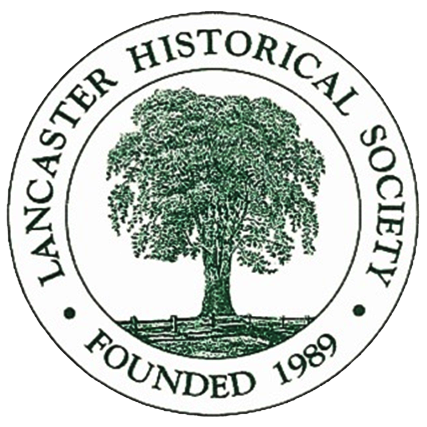About the Lancaster Historical Society

The Lancaster Historical Society (LHS) was founded in 1989 as an outgrowth of the Lancaster Historical Workshops which were started by interested town residents in the early 1960’s. The LHS is a 501(c)(3) charitable organization supported primarily through membership dues which are solicited during the month of September each year. The LHS has no physical home location but, through a special mutual agreement, all holdings have been placed on permanent loan to the Lancaster Historical Commission. An average of four programs of local and regional historical interest are offered each season with two programs usually scheduled in the fall and two in the spring. The programs are offered free of charge and are open to the public. Nonetheless, donations are always welcomed.
About the Town
Officially incorporated in 1653, Lancaster is the oldest town in Worcester County and one of the earliest permanent English settlements in north central Massachusetts. The town is named for Lancaster, England, the town from which its founder John Prescott emigrated. Located in the Nashua Valley and in the the spot where the north and south branches of the Nashua River converge (at the “Meeting of the Waters”), it was the numerous fertile intervales (low lying fields) along the river banks that attracted those early English Settlers.

Through its three-hundred and sixty-eight year long history, the town has witnessed many significant events including its total destruction when brutally attacked in 1676 during King Philip’s War. Mary Rowlandson, the minister’s wife, was taken captive. After her redemption, she wrote an account of her two and a half month experience among the Natives. This narrative became America’s first “best-seller” authored by a woman. Lancaster is also the birthplace, in 1849, of Luther Burbank a well-known horticulturalist from earlier times and developer of the “Burbank Potato” used in making McDonald’s French fries.
Another fascinating chapter in the town’s history has to do with the wealthy and philanthropic Thayer family. Though they became members of Boston’s upper crust “Brahmin” class, they never lost their love for the town where family members lived part-time for more than four generations. A network of their five country estates still survive as elegant reminders of the “Gilded Age”.
Lancaster also boasts many fascinating landmarks. Long ago, its numerous and magnificent trees made the town a tourist destination. The Beaman Oak on Seven Bridge Road and the Queen Elm off Center Bridge Road, though long gone, were “must-sees”. The “Crown Jewel” of all town landmarks may well be considered the iconic Fifth Meetinghouse AKA “Bulfinch Church” erected in 1816 and located on the expansive and historic Town Green. Designed by famed American architect Charles Bulfinch, it was officially designated as a National Historic Landmark in 1970.